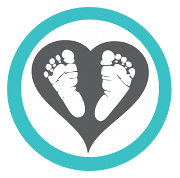Some things to consider...
The March of Dimes says, "More than 70 percent of premature babies are born between 34 and 36 weeks gestation. These are called late-preterm births. Late-preterm babies account for most of the increase in the premature birth rate in this country. A 2008 study found that cesarean sections (c-sections) account for nearly all of the increase in U.S. singleton premature births, and this group had the largest increase in c-section deliveries."
What this means is that "late-preterm births" are the most preventable of all preterm deliveries. Much stress and risk can be avoided if the baby can go home with mom rather than going to a NICU (Newborn Intensive Care Unit). In addition to the emotional trauma, a special care nursery with its restrictions, wires, machines, treatments and feeding requirements associated with preterm babies can interfere with breastfeeding success and the health care costs skyrocket. We are very fortunate to have excellent NICU care, but a healthy, closer-to-term infant is ideal.
There is some confusion about why these preterm infants are preventable. If the induction is based on calculated dates, it would seem they would be at term. The problem arises that calculations have an error factor and can be off by a couple of weeks. Thus a "term" baby of 37 completed weeks gestation could actually be 35 weeks by physiological exam at birth. This happens often enough that the stats could be improved greatly by not delivering prior to 39 completed weeks' gestation, unless there is a serious medical concern with the mother or baby necessitating an early delivery. This would be in such cases as pre-eclampsia (where the blood pressure gets too high and can't be brought down with traditional means - bedrest and meds) or when the baby has a placenta or cord problem keeping it from receiving adequate nourishment.
There are other situations as well, but a few reasons that really aren't wise for an earlier delivery include:
- The doctor is going out of town
- The baby's grandmother is coming to town
- The mother is tired of being pregnant
- The mother is having lots of "false" labor and is uncomfortable
- The doctor said the baby will be healthy at this point (this is hard to ascertain)
- The ultrasound said my baby is too big (ultrasound exam estimates of weight in late pregnancy may be off by one whole pound)
- A friend/relative had a baby born early and was just fine
- Big babies run in the family
You may be a candidate for induction if:
- Your cervix is ready (soft, dilating and effaced) and the baby in low, correct position. A bishop's score is often used to predict readiness.
- You have completed 39 weeks or more of gestation with accurate date estimates by last menstrual period and/or early ultrasound dating. The closer you are to your due date, the higher the likelihood of a successful induction.
- You have discussed pros and cons of induction with your doctor or midwife, including how long induction will last before other interventions occur, such as c-section. There are a lot of 5:00 pm c-sections performed following early morning inductions - sometimes due to "failure to progress" which may just mean not enough time to progress yet. It is not unusual for labor to take 12-14 hours and the initial dilation can be slow, especially if the cervix is less favorable).
- You are OK with having an IV from the onset and for the duration of labor and delivery. Usually continuous monitoring is also required, thus restricting movement and mobility to a degree, possibly earlier than desired.
- You are able to be objective about what is best for you and your baby. It is easy when you are nearing nine months pregnancy to let your emotions make your decisions. Try to remember that even though each day feels like a week, adequate time in utero is critical to the health of your baby.
- You can be flexible since some procedures may be required that aren't part of your birth plan. However, you can have an unmedicated (limited or no anesthesia) birth even with induction if you want, particularly if you have prepared for that.
Tomorrow I will post a 16 minute video for your enjoyment, celebrating the first birthday of one late preterm baby. He is very healthy now but he got a rough start.























No comments:
Post a Comment
This blog only reviews comments before posting to avoid hijacking. We will respond to comments Mon-Thurs but we are closed Fri-Sun and legal holidays.